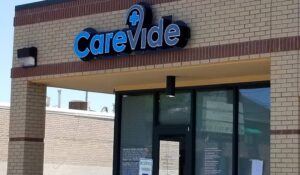Productivity and efficiency are concepts with similarities, but they are not the same thing. Efficiency has to do with the quality of work. For example, a process that produces less waste to create the same amount of product is more efficient than its more wasteful counterpart. Productivity has more to do with the quantity of work completed. If your company made 100 products last week but made 125 products this week, then productivity has gone up.
Historically, productivity and human capital have a symbiotic relationship; higher productivity allows a company (or a society) to invest more in human capital, which in turn increases productivity further. Yet, during most of the last 50 years, employee pay has grown more slowly than would be expected based on productivity gains and inflation. Is productivity lower than expected due to underinvestment in people? Some researchers say yes.
There are many ways to invest in our “human capital,” and paying higher wages is the primary way. But there are others, too: investing in training and education, investing in employee wellness, utilizing employee engagement tools, and allowing employees time to explore new ideas or development opportunities. Bain & Company’s Eric Garton, along with co-author Michael Mankins found that better time, talent, and energy management unlocked 40 percent more productivity for top-quartile companies. Here is why and how to invest wisely in your employees.
Employee Turnover Is Expensive
Josh Bersin of Deloitte claims that employee turnover costs one-and-a-half to two times the employee’s annual salary. Those costs consist of recruiting, onboarding, training, and the time it takes for an employee to reach full productivity. Less obvious costs are the loss of engagement of colleagues, due to employee churn, and higher error rates. Moreover, employees should be thought of as appreciating assets that deliver more value to the organization over time.
Workaholics Bring Diminishing Returns
At first, it may seem great that the new person is a hard worker, putting in extra hours when necessary, and attending to every detail. However, productivity and workaholism do not correlate as well as you may think. Constant busyness keeps people from seeing the big picture, and burnout causes problems not just for workaholics, but for those around them. Productivity benefits from time spent recovering from major work pushes.
Employee Well-Being Is an Investment That Pays Off
Worksite wellness programs are proving to be a good way to control rising healthcare costs. Wellness programs require an investment of money and time, of course, but it is an investment with a positive ROI. Harvard researchers found that for every dollar spent on employee wellness, healthcare costs fell by approximately $3.27. Costs of absenteeism fell about $2.73 for every dollar spent on employee wellness. It is no mystery why 61 percent of large employers (with at least 500 employees) invest in employee wellness.
Understand the Opportunity Cost of Time
There are many ways to invest in your employees, and you will be more enthusiastic about doing so if you understand the opportunity cost of time. Time, which is particularly scarce for knowledge workers, is subject to all manner of organizational “drag,” like needlessly complex processes and inefficient interaction and communication. Fortunately, there are highly useful employee engagement tools, both custom and off-the-shelf, that help companies maximize the value of employee time.
Consider Lateral Moves and Cross-Training
It is standard practice to hire someone for a certain career path and lock them into it from day one, even if it is not the best fit for them. Maybe the engineer you hired to run computational models would thrive from collecting test data, or vice versa. Promoting from within and listening to employees when they express interest in lateral moves can ensure you have not only the right people on board but the right people in the right capacity.

Use Employee Engagement Tools That Benefit Everyone
There is simply no reason not to allow employees to use productivity tools similar to the ones they use to manage their non-work life. If your employee can book a dentist appointment using a mobile app, then why not make it possible for them to book a conference room with equal ease? If they can learn a foreign language from a mobile game, why not make it possible for them to learn proper sales techniques from gamified training? Employees want to be efficient, and they want to be productive. If your business does not facilitate that, they may well look for opportunities elsewhere, where their skills are put to better use.
Are employee engagement tools the answer to every productivity issue? Likely not. A toxic culture probably cannot be saved by implementing a company social network. However, employee engagement tools, including productivity apps, can make a measurable difference from the moment employees learn how to use them.
The possibilities are almost endless. An app for your field-workers that allows them to record data on their phone or tablet is infinitely better than having them write down information and enter it into a database later. Communication tools that let someone in your New York office leave a message for someone in the LA office who will not arrive at work until three hours later make far more sense than endless rounds of phone tag. Customer surveys that can be deployed and analyzed without the use of paper? Yes, please.
HubEngage offers businesses of all types a fully customizable app platform, optimized for employee engagement. In other words, hubEngage empowers businesses like yours to create the exact, custom employee engagement tools that work for your people and your business. Adding company-specific branding and content is easy, so you do not have to try to shoehorn your particular app needs into an app that is not right for you.
Better still, hubEngage offers powerful, data-driven analytics, giving you, not only the “big picture,” but also specific scoring metrics, so you can gauge how well individual pieces of content, training modules, or gamified processes perform. If your goal is to increase employee engagement, have a happier, more satisfied workforce, and enable easy advocacy and knowledge sharing, you cannot do better than the employee engagement tools hubEngage offers.
Investing in employees is more than just a feel-good sentiment; it is proven to raise productivity, and productivity is perhaps the biggest factor in a business’ ability to succeed and improve employee satisfaction over the long term. Test drive our employee engagement app, and be ready for a new world of employee engagement opportunities to open up to you.














